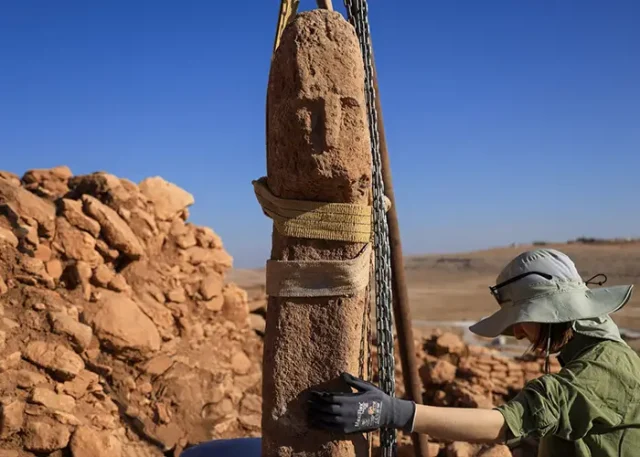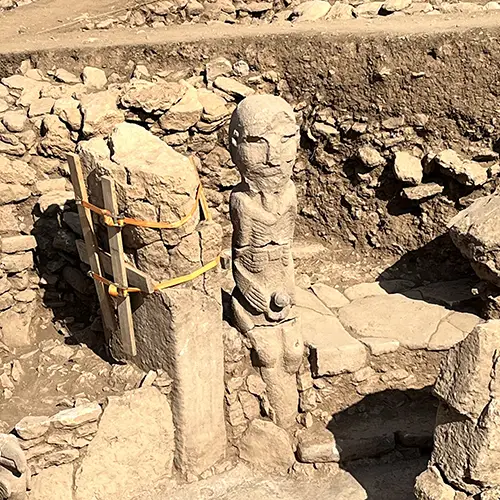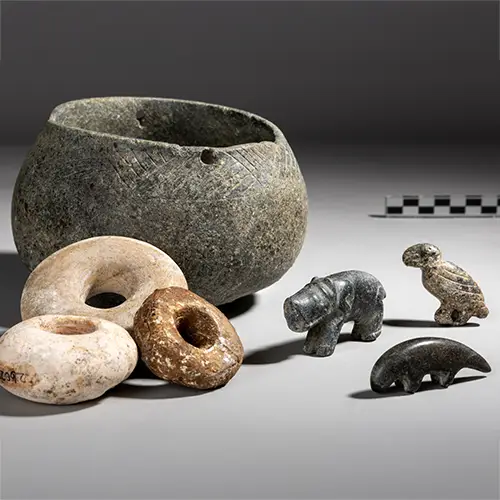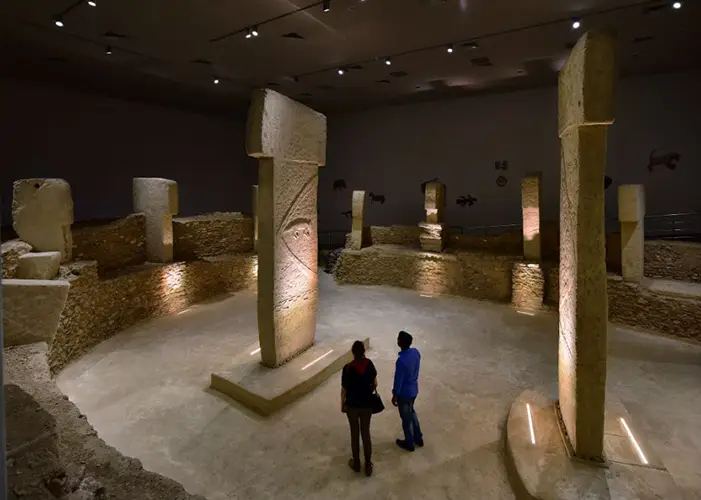
Şanlıurfa in southeastern Türkiye is one of the key centres shedding light on human history, with numerous discoveries unearthed through excavations across various sites within its borders. Taş Tepeler (Stone Mounds), home to the world’s oldest Neolithic sites, including Göbeklitepe and Karahantepe, is transforming the understanding of prehistoric civilization through groundbreaking archaeological discoveries.
New discoveries offer compelling reasons to visit the captivating region
Karahantepe is a star site in the region, capturing global attention. Excavations have uncovered a new first – a T-shaped pillar carved with a human face, revealing a striking expression of Neolithic imagination. Until now, the T-shaped pillars found in Göbeklitepe and its surroundings, adorned with carved arms and hands, have long supported the interpretation that these monumental stones symbolised human form. This new find marks a significant milestone in Neolithic studies, representing the first known depiction of a human face directly carved on a T-shaped pillar. The face is sculpted on the upper section of the pillar and features sharp contours, deep-set eyes, and a broad, flat nose, echoing the distinctive style of previously discovered human statues at Karahantepe.


Karahantepe was the site of another extraordinary first earlier this year with the discovery of what is believed to be the world’s earliest known three-dimensional mythological depiction. Archaeologists uncovered artifacts that were deliberately arranged in a specific order, representing a compelling symbolic narrative and sealed under sterile red soil. Described as the discovery of the century for the Neolithic Age, these artefacts represent a three-dimensional form of a story.
Must-see marvels of Taş Tepeler
The UNESCO World Heritage Site of Göbeklitepe is another of Şanlıurfa’s archaeological treasures and the first site to change forever what we know about human history. Göbeklitepe’s fascinating finds include colossal T-shaped pillars, the first life-sized painted wild boar statue, and a recently unearthed human figure embedded in a wall as a votive offering.
History enthusiasts from around the world are drawn to witness some of the oldest monuments known to humankind, taking a journey through the footsteps of ancient ancestors. One of Türkiye’s most visited archaeological destinations, Göbeklitepe welcomed 497,394 visitors in the first eight months of 2025.

Şanlıurfa’s Attractions
Another essential stop on Şanlıurfa’s Neolithic Route is the Şanlıurfa Museum. Türkiye’s largest museum complex is among the wealthiest collections of artefacts. The museum’s halls are arranged chronologically, from prehistoric times to the present day. Haleplibahçe Mosaic Museum, located next to the Şanlıurfa Museum, is home to an extraordinary collection of in-situ mosaics.
Often described as an open-air museum of Türkiye’s southeast, Şanlıurfa also offers many other cultural treasures. From the legendary Balıklıgöl to the iconic Harran dome houses, the city invites exploration at every turn. And, of course, Şanlıurfa’s cuisine is a journey of its own; from succulent kebabs to delicious lahmacun and çiğ köfte, every meal is an invitation to taste history. The local breakfast of Şanlıurfa is grilled sheep’s liver, an experience in itself.
As part of the Taş Tepeler Project, carried out by the Ministry of Culture and Tourism of the Republic of Türkiye, the 2025 excavation season continues across ten sites in the region. Göbeklitepe, Karahantepe, Sayburç, Sefertepe, Harbetsuvan Tepesi, Gürcütepe, Çakmaktepe, Yeni Mahalle, and Söğüt Tarlası are open to visitors year-round. From three-dimensional sculptures and animal bones to stone vessels, beads, ornaments and intricate reliefs, every found object offers a glimpse into the dawn of human creativity in these settlements





